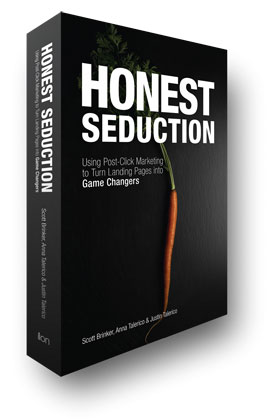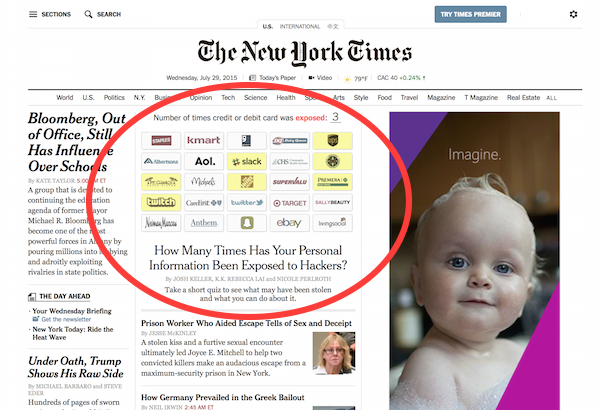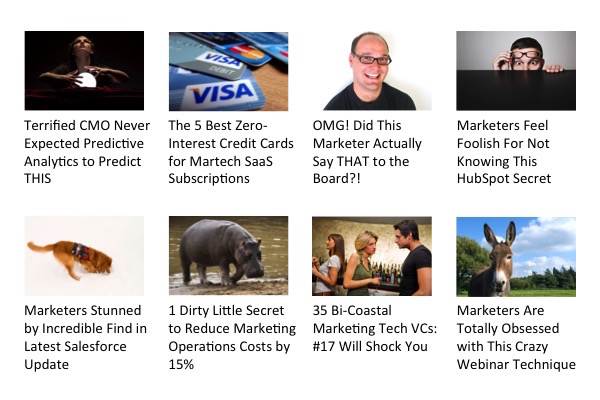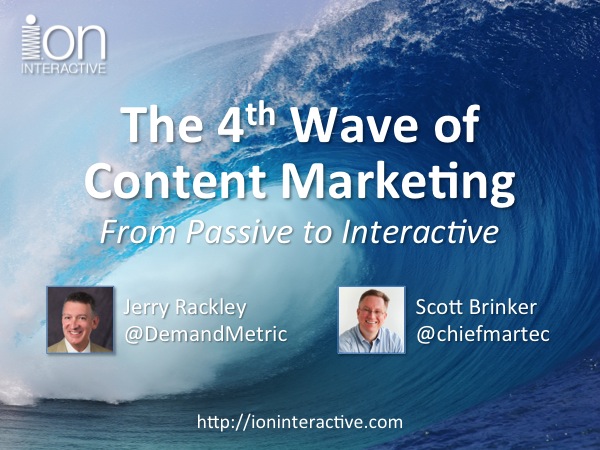If you’ll forgive me for a little promotion of my company — usually I try to keep my posts here as agnostic as possible — I’d like to share with you a book, a story, and a dream. If you’re a marketing technologist, I think you’ll find this relevant on a number of levels, especially if you have an entrepreneurial slant.
Let’s start with the story.
The Background Story
My company, ion interactive, was launched as a boutique web development shop in 1998 with 4 founding partners. We had the good fortune to work on some great web start-ups, as well as high-profile projects for companies such as Siemens, Office Depot, and Yahoo!. We not only survived the dot-com bust, but thrived in the new post-bubble era where “reality” was back in fashion. (What can I say? I’m a pragmatist at heart.)
But by 2005, we’d seen two patterns emerge:
1. Enterprise web sites were becoming ever more deeply integrated into the operational fabric of organizations, making it harder for outside agencies to build or maintain them. Companies needed to have web development competency — and the strategic leadership to manage it — in house. The days of high-flying, rock-star web development firms running the show were waning.
2. Ironically, at the same time, online marketing was outpacing the speed at which the corporate web site could keep up. Marketers increasingly needed specialized web destinations — landing pages, microsites, and mini-applications — to match specific campaigns in search, email, social media. These satellites to the official web site had a different strategic and tactical profile. But there were few systems or software products to address this “outer web field”; such projects were done on a purely ad hoc basis, at great cost in time and money with little scalability or agility.
Having built custom solutions for several of our clients for managing these extra-web properties, the commonalities among them began to converge and the concept for a post-click marketing platform was born. That year, I began the Sloan Fellows program at MIT, and had a summer “sabbatical” away from work to do graduate studies on market segmentation, system dynamics, and disruptive innovation. Combined with my partners’ cutting-edge ideas about post-click marketing creative, with an emphasis on multi-step landing experiences called conversion paths, a vision coalesced for a unique combination:
- campaign management geared towards Long Tail microcampaigns;
- content management, but tailored for these micro experiences;
- a focus on audience segmentation, especially via behavioral mechanisms;
- testing and optimization — and associated analytics — baked in;
- an ecosystem approach to the create-test-analyze-adjust marketing pattern;
- software-as-a-service to be fully in marketing’s control, minimal IT;
There were many competitors for some of these features — e.g., web content management — but no one who pulled them all together in quite this configuration. And so the LiveBall product was launched (and ion gracefully exited the old web development business).
The Dream: Post-Click Marketing
When we first conceived of post-click marketing, we envisioned it as a space that didn’t yet exist. In 2005, there was tremendous emphasis on online advertising — winning clicks — and then, after the click, most people turned all their attention to their main web site. What was missing was the connective tissue between the two. The idea of “landing pages” had been around for a while, but frankly, most of them were pretty weak and cookie-cutter.
The idea that landing pages — or, more broadly any of these “outer web field” destinations, including microsites and conversion paths — would get elevated to their own spotlight role in the online marketing universe was bold at the time. Even today, landing pages per se are a down-in-the-weeds tactical term; the concept of post-click marketing, however, is much broader and strategic.
Three motivating factors for a post-click marketing uprising were:
1. The number of Long Tail advertisements were growing, slicing up the market into ever more targeted niches, each ready to benefit from a more tailored dialogue.
2. The creative canvas for advertisements were shrinking, primarily as a result of Google’s 130-character text ads becoming the dominant online advertising vehicle. The onus for delivering a good and useful marketing interaction with a potential customer shifted almost entirely to after that first click.
3. An organization’s main web site had so much overhead and global audience requirements that it was difficult to impossible for marketers to quickly bend and adapt it to the myriad of parallel ads out there. Everyone agreed with the best practice of matching targeted web content as a follow up to targeted ads, but the execution inside the main web site was often prohibitively complex.
The way to address all of those issues — and actually leverage them for competitive advantage — was to establish a post-click marketing environment that delivered these ad-specific destinations, where front-line marketers could rapidly iterate tailored landing experiences for their different niche audiences.
Often these landing experiences would eventually connect back into the main web site — seamlessly from the user’s perspective — but in the context of having connected-the-dots with the ad. Essentially, these post-click landing experiences become part of the advertising — an extended canvas to have as deep and specific of a dialogue with a particular segment of customers as marketing can creatively imagine.
The payoff: higher conversion rates, higher ROI, and more market growth.
It’s my dream that this post-click marketing space will flourish as a new realm of useful and creative marketing on the web — that this “outer web field” will become the backbone of some of the most successful campaigns and market strategies in the decade ahead.
We’re not there yet, but with customers from American Greetings to Wyndham Worldwide having had spectacular success with the platform — our customers have achieved conversion rates over 4X the industry average — we’re on the way.
The Book: Honest Seduction
All of this leads me to a shameless plug for a book that we just released, Honest Seduction: Using Post-Click Marketing to Turn Landing Pages into Game Changers. The title, Honest Seduction, is described in the foreword, but emphasizes that post-click marketing is about genuine and authentic engagements with people, no black hat funny business.
Taken from a collection of blog posts written by my partners, Anna and Justin Talerico, and myself over the past 10 years — nicely edited together by Justin — the book may be of interest to you on two levels.
First, if you’re interested in post-click marketing for your organization, this book will give you a wealth of information about what it can do for you and how you can make it happen.
Second, because of its blog-based chronological format, you can see how our thinking around post-click marketing has evolved and matured over the years. That may not be everyone’s cup of tea, but as an entrepreneur myself, I always enjoy peeking into the kitchen to see how the cake was baked.
If you like it, dislike it, or want to talk about any aspect of it, send me an email or a tweet — would love to get your perspective.
I’ll now return to my regular broadcasting here, but if you want to read more of my thoughts on post-click marketing, link on over to the Post-Click Marketing Blog.




Scott, Congrats on the book! Don’t know how you manage to do all that you do.
Just ordered it from Amazon so it’s on it’s way.
Thanks, Dharmesh. Given the whirlwind of cool things you, Hubspot, the “Graders”, and OnStartups continually produce, I often think the same thing: how do you do it all? 🙂